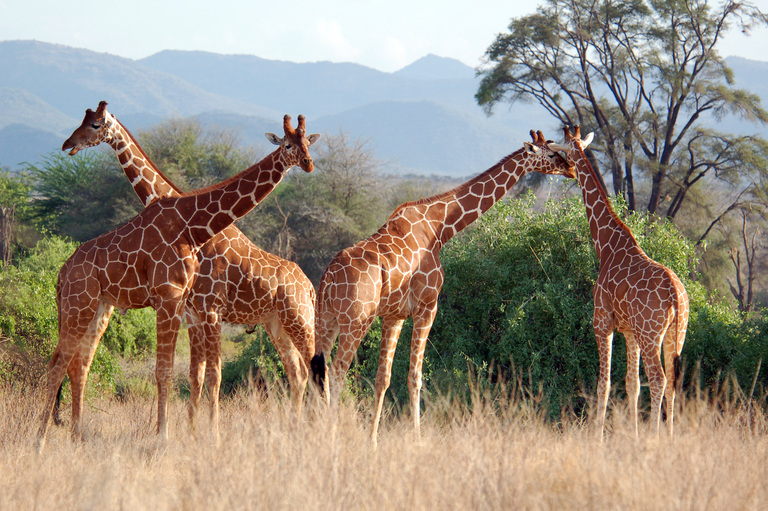Giraffe: Tallest Land Mammal
Introduction:
The giraffe, scientifically classified under the genus Giraffa, stands as one of the most iconic and distinctive creatures in the animal kingdom. Renowned for its towering height, the giraffe holds the esteemed title of the tallest land mammal on Earth. This extraordinary mammal is native to the vast and diverse landscapes of Africa, where it roams across savannas, grasslands, and open woodlands.
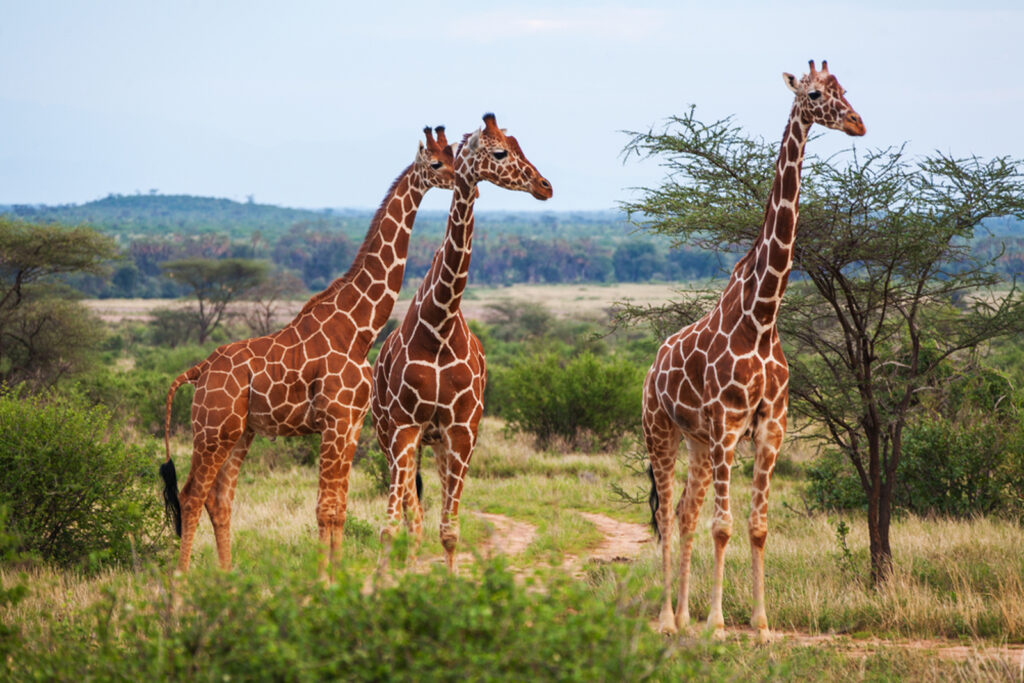
Habitat:
The habitat of giraffes encompasses a range of environments only across the African continent. They are commonly found in savannas, which are expansive grasslands with scattered trees. Giraffes are well adapted to these open landscapes where they can spot predators from a distance and access the high branches of trees for feeding.
Species of giraffes:
There are currently four recognized species of giraffes:
Northern Giraffe (Giraffa camelopardalis): This species is further divided into several subspecies, including the Nubian giraffe, West African giraffe, Kordofan giraffe, and Rothschild’s giraffe.
Southern Giraffe (Giraffa giraffa): This species is found in Southern Africa and includes several subspecies like the South African giraffe, Angolan giraffe, and Namibian giraffe.
Masai Giraffe (Giraffa tippelskirchi): Found in East Africa, the Masai giraffe is known for its jagged and irregular spot patterns.
Reticulated Giraffe (Giraffa reticulata): This species, native to Eastern Africa, is characterized by its distinct and well-defined net-like (reticulated) pattern of spots.
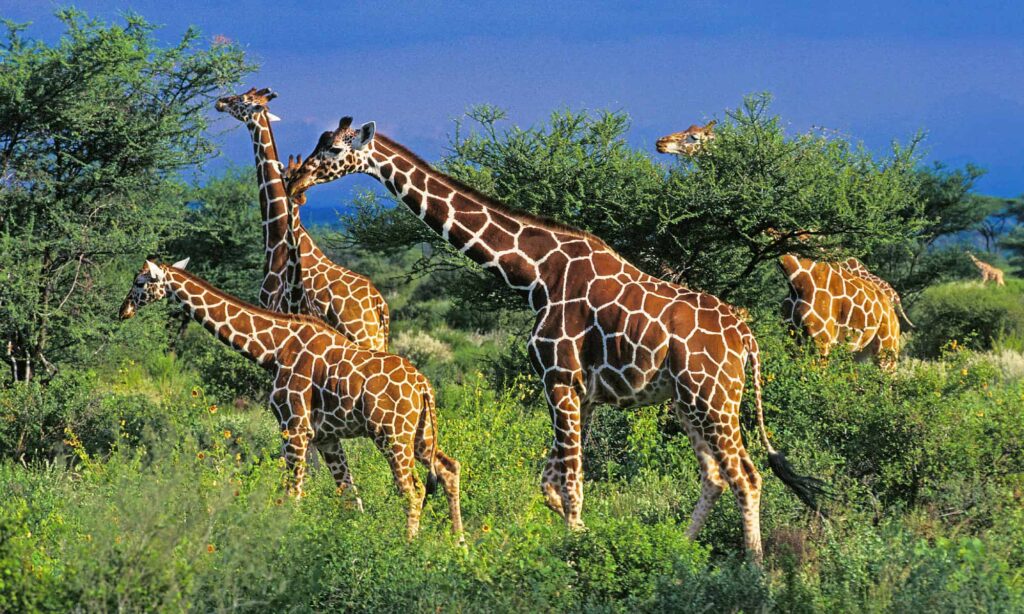
Taxonomy of giraffes:
The taxonomy of giraffes involves classifying them within the biological hierarchy. Here is the classification of giraffes:
- Kingdom: Animalia (Animals)
- Phylum: Chordata (Chordates)
- Subphylum: Vertebrata (Vertebrates)
- Class: Mammalia (Mammals)
- Order: Artiodactyla (Even-toed ungulates)
- Family: Giraffidae
- Genus: Giraffa
- Species: There are four recognized species of giraffes:
- Giraffa camelopardalis (Northern giraffe)
- Giraffa giraffa (Southern giraffe)
- Giraffa tippelskirchi (Masai giraffe)
- Giraffa reticulata (Reticulated giraffe)
Lifespan:
In the wild, giraffes typically live to be around 20 to 25 years old. However, their lifespan can be influenced by factors such as predation, disease, and environmental conditions. In captivity, giraffes may live longer, often reaching 25 years or more.
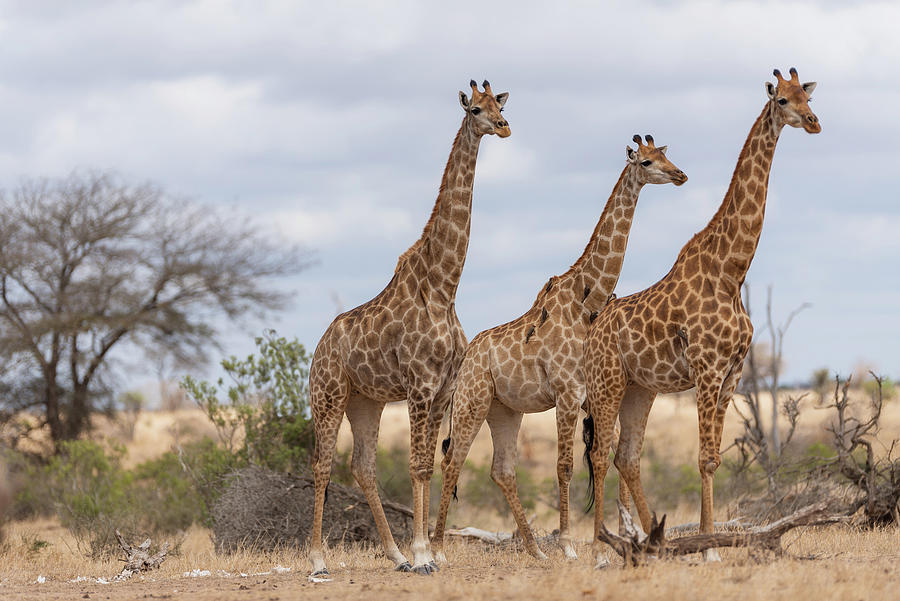
Tallest height of giraffe:
The tallest giraffes can reach a height of around 18 feet (5.5 meters). This measurement typically includes both their neck and body. The long neck, which can be as much as 6 feet (1.8 meters) alone, contributes significantly to their overall height. Keep in mind that individual giraffes may vary in size, and the heights mentioned are general estimates for this remarkable species.
Weight:
Giraffe weights can vary based on factors such as age, sex, and subspecies. On average, adult male giraffes weigh between 2,400 and 3,000 pounds (1,100 to 1,400 kilograms), while adult females typically weigh between 1,600 and 2,600 pounds (700 to 1,200 kilograms). These are general estimates, and individual giraffes may fall outside these ranges. Newborn giraffe calves usually weigh around 100 to 150 kilograms (220 to 330 pounds) at birth.
Gestation Period:
The gestation period for giraffes is around 15 months. Female giraffes give birth to a single calf, although twins can occur in rare cases.
Baby Giraffe:
A baby giraffe is called a calf. Calves are usually about 6 feet tall at birth and can weigh up to 220 pounds (100 kilograms). They start standing and walking shortly after birth, allowing them to join the rest of the herd and reduce vulnerability to predators.
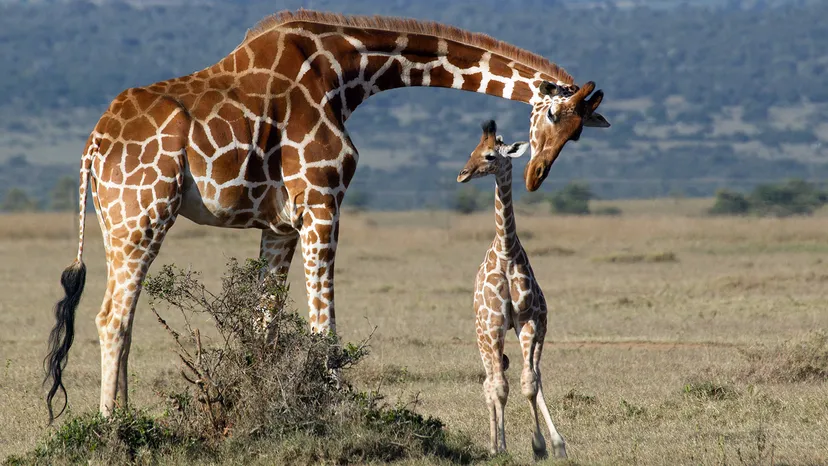
Population:
Today, GCF estimates the current Africa-wide giraffe population at approximately 117,000 individuals. This is a drop by almost 30%, a slightly less bleak picture than previously portrayed in the 2016 IUCN Red List assessment that estimated giraffe at less than 100,000 individuals (2023).
Conservation Status:
The International Union for Conservation of Nature (IUCN), the gold standard for assessing endangerment, has found that giraffes are “vulnerable,” meaning they face a “high risk” of extinction in the wild (2023).

Conservation Efforts:
Giraffes face threats such as habitat loss, poaching, and human-wildlife conflict. Conservation efforts involve protecting their habitats, addressing poaching concerns, and promoting coexistence with local communities. Organizations like the Giraffe Conservation Foundation work to research and implement conservation strategies to ensure the long-term survival of giraffe populations.
